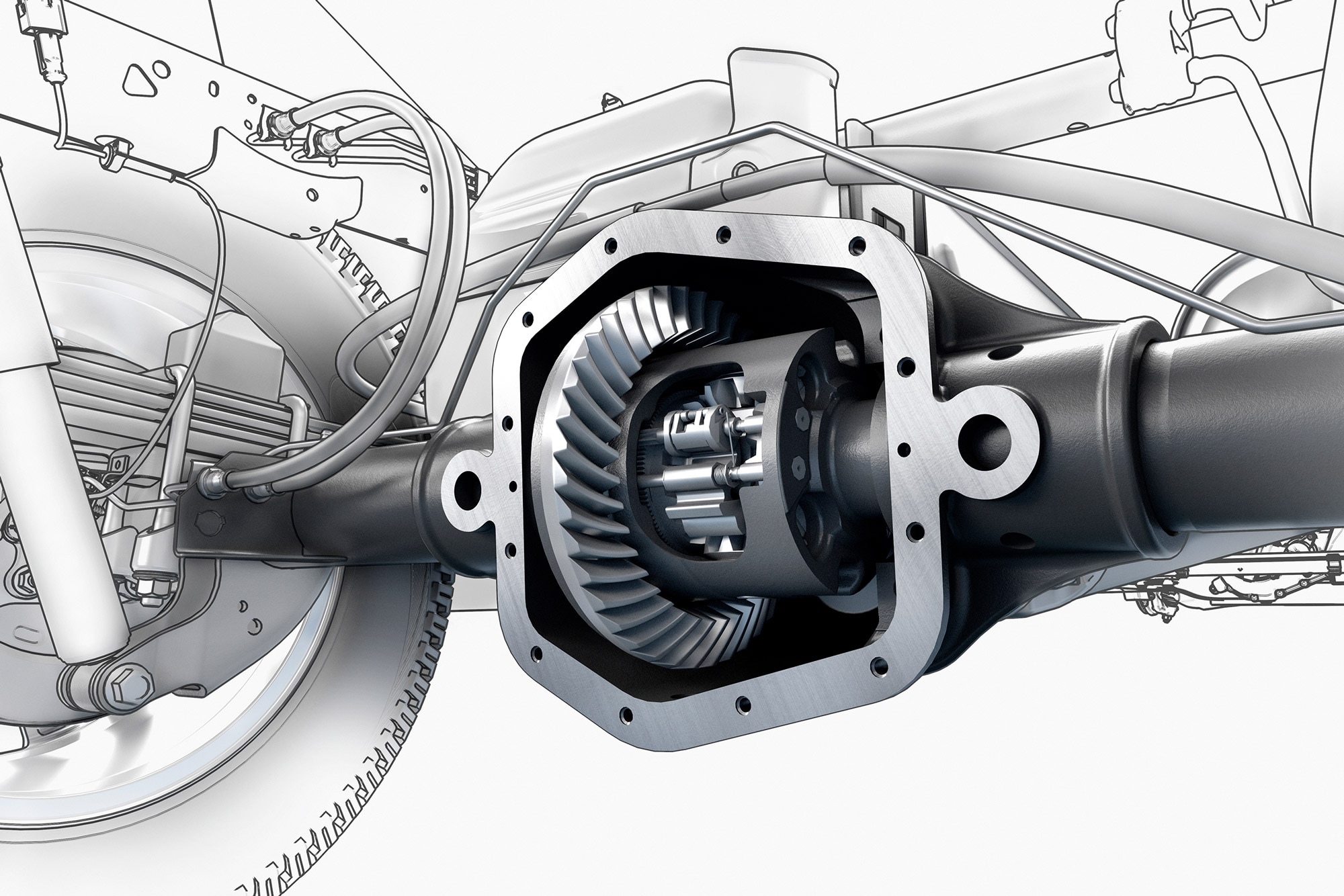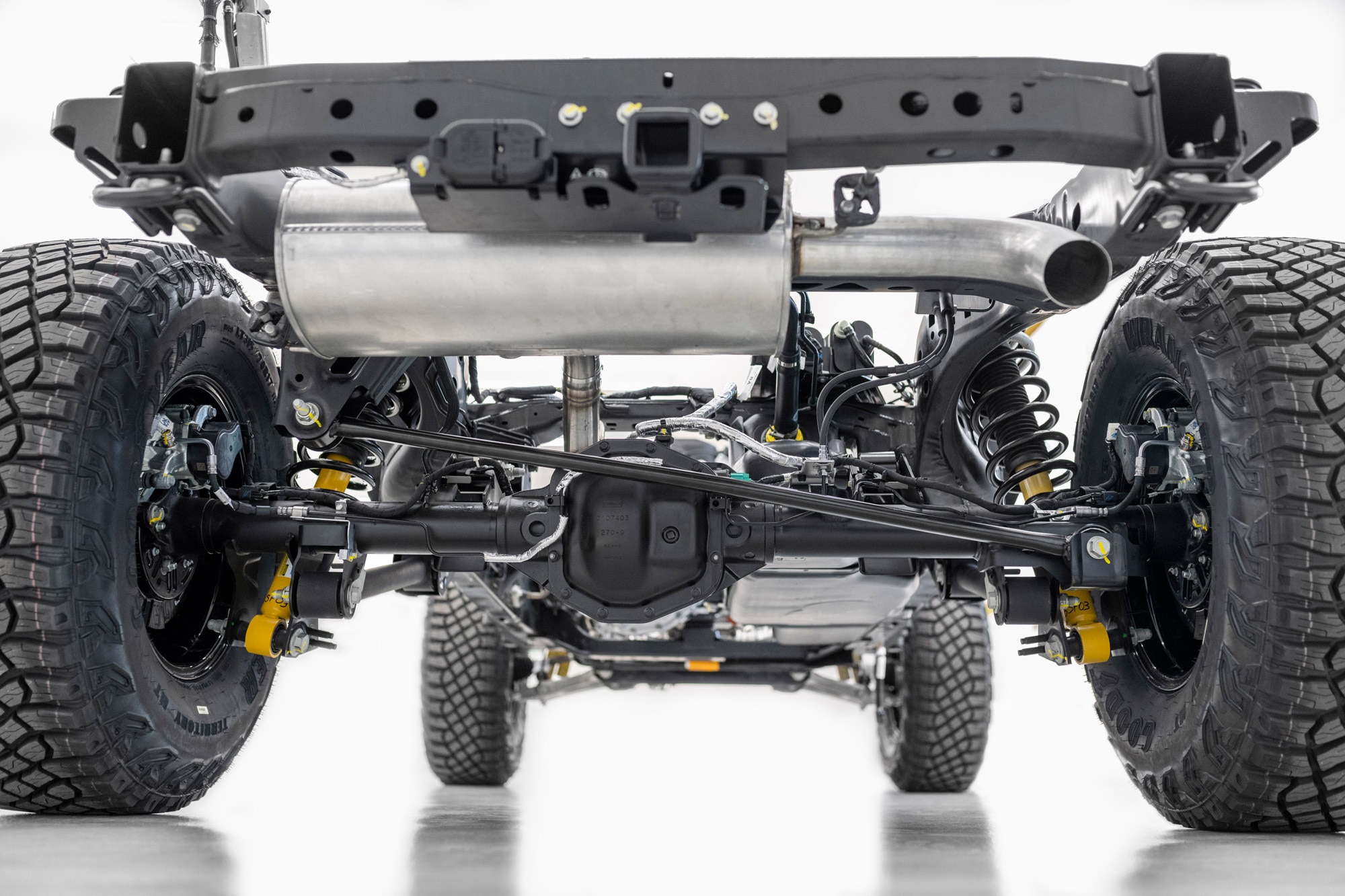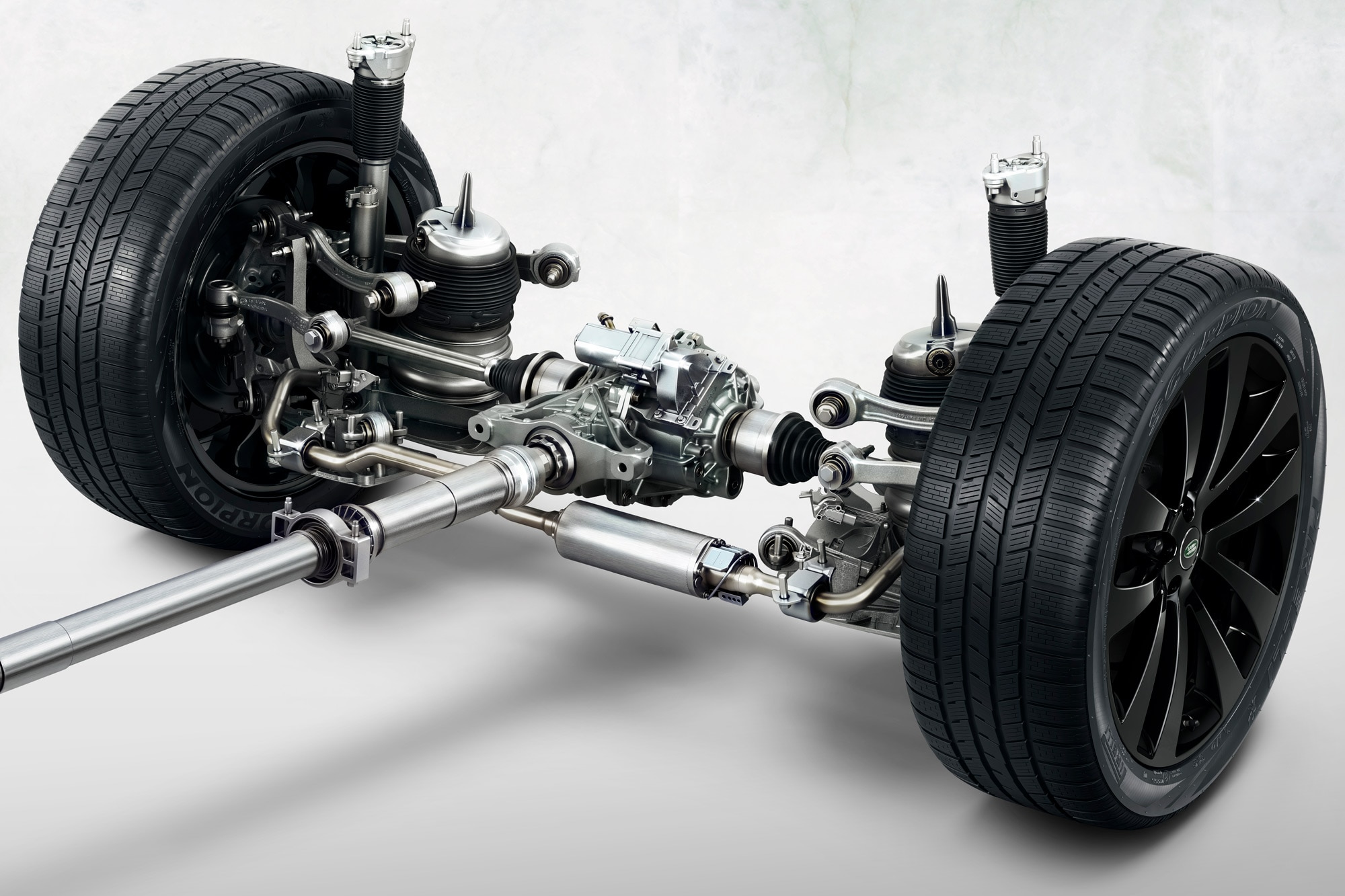What Are Axle Ratios?
Understanding the numbers and what they mean for a vehicle's performance.
![]() Jeep
Jeep
When buying a new car, it's typical to research certain figures — fuel economy, horsepower, maybe even the number of transmission gears. But one figure that may seem foreign to some shoppers is the vehicle's final drive ratio, also known as its axle ratio. Here's what you need to know about axle ratio and what the various numbers mean.
 GMC
GMC
Car Axles and Differentials: What They Are and What They Do
The car axle is a shaft that rotates the vehicle's wheels while also supporting its weight. A differential allows the wheels on opposite ends of the axles to turn at separate speeds, which is necessary because the outside wheel will travel a greater distance than the inside wheel in a turn.
Axles and differentials work in conjunction to transfer rotational force created by a vehicle's engine to where it matters most: the wheels. The driveshaft transfers rotational force from the engine to the differential, which, through a series of gears, transfers that rotational force to the axles, which turn the wheels.
 Ford
Ford
Axle Ratios Vary From Vehicle to Vehicle
The number of revolutions a driveshaft has to make to rotate the axle one full turn is known as the axle ratio.
Axle ratios are formally denoted as the number of driveshaft rotations to the number of axle rotations. For example 3.21:1, meaning that the driveshaft must make 3.21 rotations to rotate the axle one full turn. More commonly, though, you'll see this simplified to just 3.21 in automaker marketing materials.
Pickup trucks tend to offer buyers a choice of axle ratios. The 2024 Ram 1500, for example, offers axle ratios of 3.21, 3.55, and 3.92. The 2024 Ram 2500 HD and 3500 HD models offer 3.73 or 4.10.
Looking at a few other examples, Toyota advertises an axle ratio of 4.100 for the manual 2024 GR 86 and 3.909 for the automatic. The high-performance
 Land Rover
Land Rover
What These Numbers Mean in the Real World
Axle ratios have a significant influence on how a vehicle performs. According to Ram, "A numerically lower axle ratio results in lower engine rpm and maximum efficiency. A numerically higher ratio improves acceleration, climbing grades, carrying loads, or pulling a trailer."
Given this, it shouldn't come as a surprise that, going back to the Ram example, the available 3.92 axle ratio is among the features included in the 2024 Ram 1500's Hemi Max Tow Package, while the standard offering in Ram 2500 HD models is higher than what comes standard on the 1500.
Most vehicles don't offer customers a choice of axle ratios, in which cases the figure is relevant only to the geekiest of shoppers. When it comes to trucks, though, buyers who want to prioritize fuel efficiency over towing prowess should opt for the lower axle-ratio number, while those looking to optimize their vehicle for towing should choose the highest available axle ratio.
Written by humans.
Edited by humans.
 Chris O'Neill
Chris O'NeillI am an auto-industry veteran and a current MBA candidate at the University of Utah. After moving to Utah in October 2015 and being fascinated by the unique car culture of the region, I started an Instagram project highlighting the rare and distinctive vehicles I see in the Mountain West region. I enjoy sharing with others my unique perspective and passion for all things automotive. In my free time, when I’m not thinking and writing about cars, I enjoy photography, toying with my 2011 Volkswagen GTI and 1999 Toyota Land Cruiser, and exploring Utah with my girlfriend and two dogs.
Related articles
View more related articles